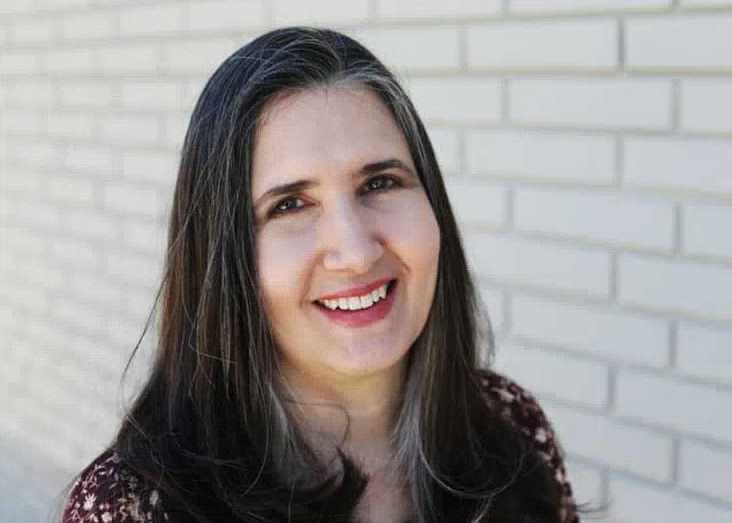Prayer is good for body, too
A few years ago, two people close to me — each who chronically struggled with life in their own way — experienced a life-changing transformation by adding one daily habit. Little by little as the months passed, interesting things began to happen.
Feelings of depression began to lift and days felt more hopeful.
I got fewer panicked calls, anxious texts or emails expressing fears with tenuous connections to fact. Less emphasis on past traumas. Fewer tears over tea. More smiles and allusions to life’s little joys. In short, they gradually felt happier and more in control of their experience.
What was this magical daily practice? A long evening prayer in one case, a morning meditation in the other. Two sides of the same coin, at least in terms of benefits.
Simple as it sounds, dedicating focused time each day to letting go of self, in whatever form, is powerful medicine. It was even recognized by Congress, which created a National Day of Prayer in 1952, asking Americans of all belief systems to share a spiritual moment on the first Thursday in May. Last week, the Kootenai County Ministerial Association led such a moment, offering music and prayers with hundreds who gathered in McEuen Park to celebrate.
Individual spirituality may or may not be about a particular religion or necessarily expressed in the form of prayer. Whatever one’s inner path, most realize early in the human experience that the peaceful release of our most pressing thoughts has healing, even restorative effects.
While similar in that sense, prayer and meditation are different. Prayer tends to work through inner thoughts, while meditation seeks to clear the mind of them. Yet both give the mind a kind of rest, and practitioners of each report feeling lighter. Call it devotion or stress release, spirituality or health practice, science backs up their value.
Happy chemicals. Multiple studies confirm meditation boosts mood-impacting serotonin and reduces the stress hormone cortisol in the brain. University of Montreal research published in the Journal of Psychiatry and Neuroscience in 2007 quantified the relationship between serotonin levels and self-induced mood changes by contemplating happy or sad feelings.
Harvard Medical School psychiatrist Ben Shapero is studying 15-minute daily mindfulness meditation as an alternative therapy for depressed patients who don’t respond well to drugs or counseling, with good results confirmed by MRIs. He’s been working with HMS Radiologist Gaelle Desbordes, whose research in 2012 demonstrated that serotonin-associated brain changes in subjects who learned to meditate over two months continued even when they weren’t meditating, while they did everyday tasks. She reported that was the first time such a continuing change had been detected.
A little focused quiet time daily, with eyes closed and slowed, deep breathing, apparently does wonders. Those interested can sample free guided meditations here: https://wellness.huhs.harvard.edu/relaxation-room.
Addiction. A 2016 study at NYU published in the American Journal of Drug and Alcohol Abuse found that Alcoholics Anonymous members who recited AA prayers (which can be adapted to individual belief) after viewing drinking-related images reported less craving after praying, compared with those who didn’t pray. The reduced cravings corresponded to brain activity measured by MRI. AA and Narcotics Anonymous have long incorporated a spiritual element in their recovery programs.
Physical health. Prior studies have linked meditation with changing gene expression and lowered blood pressure (2018 Bhasin et. al.), along with associated health improvements such as arthritis.
Calling prayer “a special form of meditation with healing power,” psychopharmacological research published in the Indian Journal of Psychiatry in 2009 reported improved outcomes in wound healing and desired pregnancy rates for patients who prayed (although not in cardiovascular patients, echoing 2001 Mayo Clinic and 2005 Duke studies).
Collective consciousness. French sociologist Emile Durkheim (1858-1917) argued that religion is broader than particular beliefs, providing social cohesion and bonding through common belief and a comforting sense of togetherness. Collective consciousness, he said, is the fusion of all individual consciousnesses, and creates a reality of its own.
Prayer is subjective, making it hard to study. Yet, in research, themes have emerged. One study showed that while increasing prayer frequency didn’t further reduce anxiety, praying in general helped people feel “secure in their attachment to God” and that was associated with feeling less anxious (Ellison et. al. 2014).
A 2009 study reported in the Journal of Psychiatric Medicine indicated “significant improvement” in feelings of depression and anxiety by patients who joined a prayer group. While their measured cortisol levels didn’t change, their reported feelings of optimism lasted beyond the final prayer session.
While it has been associated with more peaceful feelings in general, praying alone didn’t significantly improve symptoms in patients with severe anxiety (Baylor University and Ellison 2014). However, when coupled with secure belief systems and church attendance, patients did report increased life satisfaction.
Hundreds of scientific papers have been published linking positive thinking in general with better outcomes, boosted by prayer or meditation. Then again, it doesn’t take scientific credentials to confirm what so many people practicing experience.
A dedicated, scheduled focus on our spiritual side, however, translated — prayer, meditation, forest bathing, gardening or simply quiet time carved out of a busy day — can be powerfully transformative.
And doing it together just might improve how we see the world and each other.
• • •
Sholeh Patrick, J.D. is a columnist for the Hagadone News Network. Email sholeh@cdapress.com.

